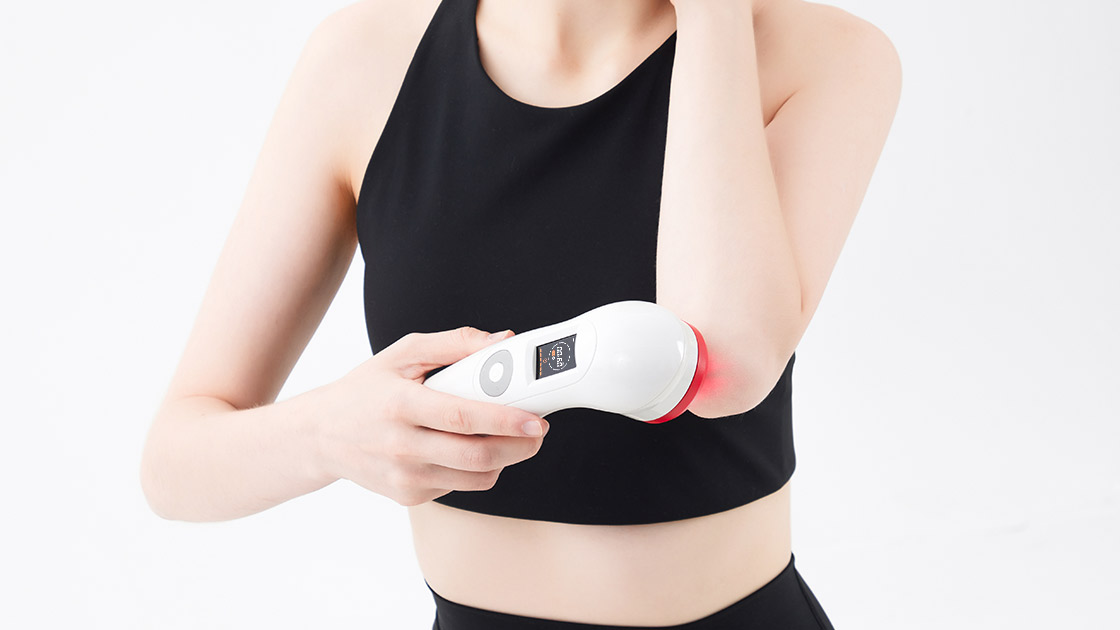Page Contents
Cold laser therapy device uses low-intensity lasers or light-emitting diodes (LEDs) to relieve pain, reduce inflammation, and promote tissue healing. Unlike high-intensity lasers in surgery, cold lasers do not cut or burn tissue. Accordingly, this makes them a safe and effective option for various medical conditions. Medical-grade cold laser therapy devices are increasingly popular due to their precision, safety, and proven efficacy in clinical settings.
Overview of Cold Laser Therapy
Cold laser therapy applies light at specific wavelengths to targeted body areas. The light penetrates the skin and tissues, where cells absorb it and convert it into biochemical energy. This process, known as photobiomodulation, triggers cellular responses that alleviate pain, reduce inflammation, and accelerate tissue repair. Cold laser therapy treats musculoskeletal conditions like arthritis, tendinitis, and sports injuries, and promotes wound healing and reduces scar tissue.
How Cold Laser Therapy Device Works
Cold laser therapy device stimulates cellular activity. When the light penetrates the skin, mitochondria absorb it. This absorption increases adenosine triphosphate (ATP) production, fueling cellular functions and promoting healing. Additionally, cold laser therapy reduces oxidative stress and inflammation by modulating reactive oxygen species (ROS) and pro-inflammatory cytokines. The combined effects of increased ATP production and reduced inflammation lead to pain relief and enhanced tissue regeneration.
Features of Medical-Grade Cold Laser Therapy Devices
Medical-grade cold laser therapy devices meet high standards of safety, efficacy, and usability. They typically feature:
Precise Wavelengths and Power Settings: Devices offer wavelengths between 600 to 1000 nanometers and adjustable power settings to target different tissue depths and conditions.
Advanced Safety Mechanisms: Built-in safety features, like skin sensors and auto shut-off functions, ensure safe and effective treatment.
User-Friendly Design: Intuitive controls, clear displays, and ergonomic designs make these devices suitable for clinical and home settings.
Regulatory Compliance: These devices comply with stringent medical standards and regulations, assuring quality and safety.
Benefits and Efficacy
Clinical research and patient testimonials document the benefits of medical-grade cold laser therapy devices. Key advantages include:
Non-Invasiveness: Cold laser therapy does not require surgery or medication, reducing the risk of side effects and complications.
Pain Relief: Studies show cold laser therapy effectively reduces pain and improves function in conditions like osteoarthritis, chronic back pain, and neuropathy.
Inflammation Reduction: The therapy’s anti-inflammatory effects alleviate swelling and discomfort in acute and chronic conditions.
Accelerated Healing: Cold laser therapy promotes cellular repair and regeneration, speeding up healing for wounds, burns, and surgical incisions.
Versatility: It can be used alone or with other treatments, like physical therapy, to enhance overall outcomes.
Applications in Healthcare
Medical-grade cold laser therapy devices have wide healthcare applications. In clinical settings, physiotherapists, chiropractors, and doctors use them to treat conditions including:
Musculoskeletal Disorders: Effective for managing arthritis, tendinitis, and muscle strains.
Pain Management: Provides relief for chronic pain conditions like fibromyalgia, neuropathy, and lower back pain.
Wound Healing: Accelerates healing of acute wounds, chronic ulcers, and post-surgical scars.
Sports Injuries: Athletes use cold laser therapy for treating sprains, strains, and overuse injuries.
In addition to clinical use, these devices are increasingly available for home use. Patients can continue their treatment regimen conveniently and consistently, benefiting from professional-grade therapy in the comfort of their own homes.
In conclusion, medical-grade cold laser therapy devices represent a significant advancement in non-invasive treatment options for pain relief and tissue healing. Their precise, safe, and effective application makes them a valuable tool in modern healthcare, benefiting both clinicians and patients alike.
